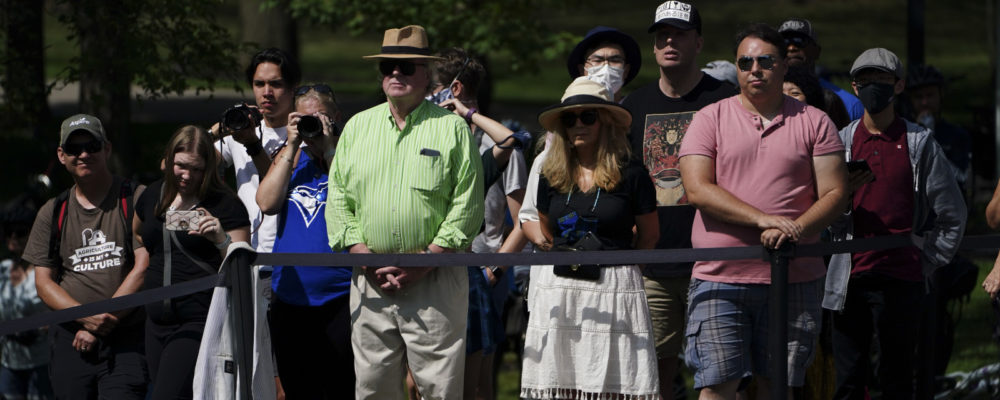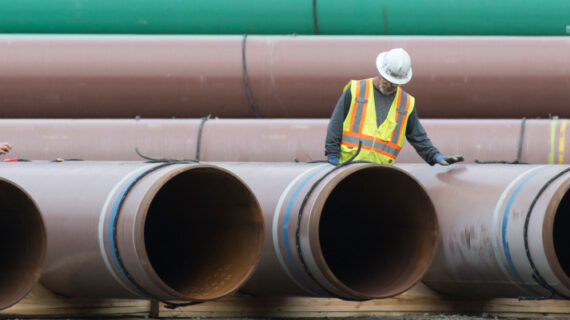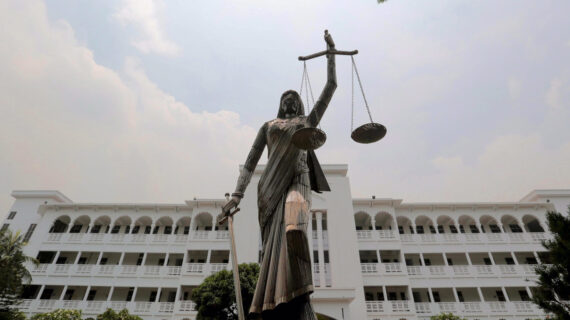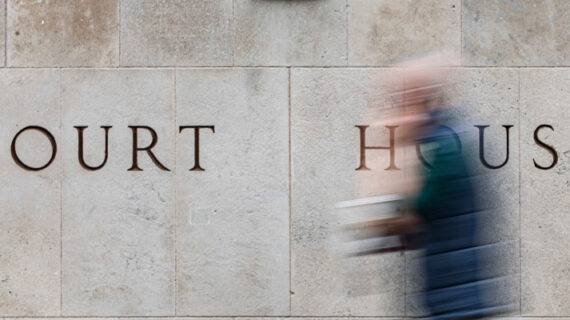The Hub started the federal election with a clarion call for more and serious debate of the competing policy visions of the country’s major parties.
At today’s halfway mark in the campaign it’s fair to say our team of journalists and much of the country is “policied out”; deluged by a daily stream of announcements covering every aspect of Canadian life from healthcare to the environment to housing to a deep dive by the Conservative Party into the policy minutia of puppy mills.
What more could a bunch of policy wonks like us really ask for?
MORE SIGNAL. LESS NOISE. THE HUB NEWSLETTER.
While we salute the parties for their focus on policy in the election’s opening weeks, there is a concerning dynamic at work when it comes to the substance of the policy pronouncements. Covering the campaign from a policy perspective daily at The Hub feels like stumbling down Las Vegas Boulevard while being accosted by casino barkers trying to lure you inside with promises of untold riches waiting for you at their craps tables.
This we know: the election has become an absolute frenzy of big ticket campaign promises by all the parties. Even more concerning is that this has been a No Numbers Campaign, with less than half of the Liberal promises having a price tag attached and only a handful of the Conservative and NDP pledges coming with a dollar amount. And even more concerning than that is no one seems to have noticed. In a decade, we’ve gone from the parties competing over fiscal responsibility, to assuming a breezy nonchalance about deficits, to not even bothering to tell us how much these promises cost.
The cross-party consensus on massive, indefinite government spending is like nothing we have seen in the modern political era.
This strikes us as odd given a recent Hub poll showing fully half of Canadians think the country has “spent too much” during the pandemic and that “debt and deficits” rank in the top four election issues. Voters aren’t stupid. They know the country is courting serious risks when its combined debt (government, non-financial corporations and individuals) stands at a truly obscene 352 percent of GDP, second only to Japan and ahead of Greece. As I have written previously, the rate of Canada’s pandemic related debt binge is quite simply off the charts with our combined debt to GDP surging over 80 percent in 2020, the single largest increase of any advanced economy in the world.
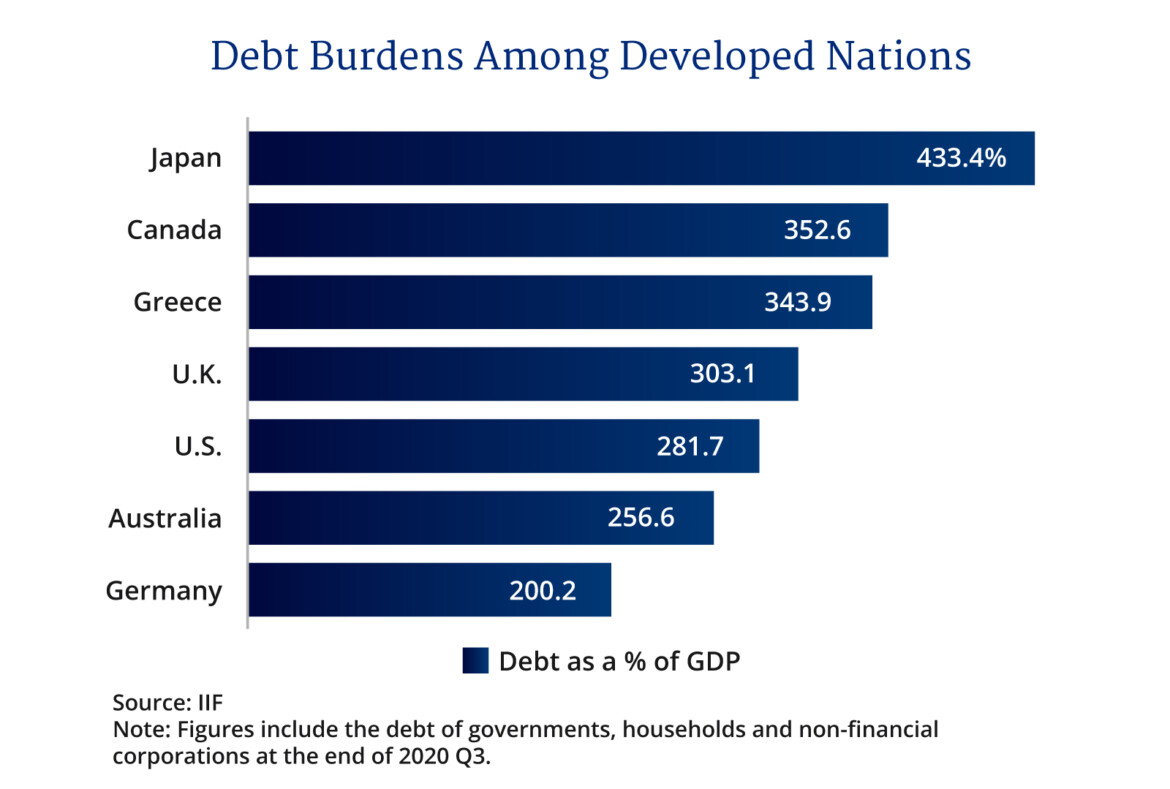
So why this cognitive disconnect between our political classes’ seemingly endless appetite for spending versus voters’ justified concerns about Canada becoming, during the pandemic, one of the most indebted countries in the world?
Part of blame lies with the campaigns themselves and the “small beer” approach to electioneering that has come to typify our politics. Instead of giving voters an idea of their first principles and where they want to lead the country (think the iconic 1988 campaign), the leaders are relentlessly micro targeting specific demographic groups with “boutique” policies and spending pledges.
It’s an algorithmic style of campaigning, overly reliant on the social media platforms, that, like a Google search word auction, encourages a bidding war for sincerity and intent. Case in point, the silly profligacy of the parties’ bidding war over who would spend more to help Canadians become homeowners.
The Conservatives opened the auction for votes with a pledge to create one million news homes, introduce the now de rigueur tax on foreign buyers, increase the limit on mortgage insurance and create an “adjusted” stress test for the self-employed (the latter policies being likely to stoke home prices).
The NDP followed up by chucking the proverbial kitchen sink at housing with 30 year mortgages, billions to build hundreds of thousands of low income units and more. Late to the bidding war for the housing vote, the Liberals countered with a $4 billion pledge to construct a 100,000 “middle class” homes (what exactly is a middle class home?) and $600 million to convert empty office space into housing.
In total, billions upon billions pledged to address an issue caused by the one variable none of the parties’ policies or platforms mention: rock bottom interest rates fueling one of the largest mortgage debt booms in Canadian history.
This sea-change in our political classes’ attitudes about debt and deficits is about more than crass campaign tactics. Something profound broke down in Ottawa’s institutional culture during the first phase of the pandemic. The point of rupture was the explicit removal of an implicit fiscal check on federal spending by the Bank of Canada.
The Liberal government was told, in no uncertain terms by then Governor Stephen Poloz, that their pandemic response should not be range-bound by an inability to sell massive amounts of new government debt to investors at low interest rates. All the record excess debt that Ottawa needed to issue during the pandemic to fund its COVID response would be purchased using dollars printed by the central bank. And, so it was, on a truly epic scale with the Bank of Canada almost quadrupling the federal debt to its balance sheet since early 2020 to some 300 billion dollars.
Our political leaders also aren’t stupid. They and their counterparts in the world’s advanced economies have caught on to the new and exciting political possibilities of governing unbound by traditional financing requirements (e.g. floating interest rates and debt appetite set by the international bond market). Why make unpopular spending decisions, giving succor to your political opponents, when your profligacy can be funded domestically by the balance sheet of your own central bank using money created out of thin air?
This new fiscal reality engendered by the pandemic has been huge boon for centre-left parties. Borrowing costs, specifically the threat of higher interest rates brought about by increased government spending, are no longer a millstone around the neck of progressive political agendas. Tens of billions for healthcare, income supports, or a green “new deal” are all possible when the cost of servicing government debt is permanently suppressed by central banks who have declared their willingness to purchase unlimited quantities of government bonds indefinitely. Given this powerful monetary competitive advantage enjoyed by the centre-left, it should come as no surprise that conservative parties and leaders are foreswearing any debt hawkishness in favor of inventing their own mode of profligacy, usually a fiscally toxic combination of tax cuts and deficit spending.
The key insight here is central bank balance sheets have become a new rentable economic and electoral resource for our political class. Lackluster growth, high debt levels, and voters’ persistent “affordability” anxieties can all be conveniently masked by engineered ultra-low interest rates and surging government spending funded by debt paid for by central banks printing money to purchase said debt.
If this all sounds too good to be true, a kind of magical money tree showering its largess on the country indefinitely, it most definitely is. Venturing when and how Canada’s economic and political experiment with modern monetary theory will end is anyone’s guess. As a relatively small economy with low levels of productivity and an over reliance on a highly indebted housing sector for economic growth, our financial “end game” will likely feature some combination of currency devaluation (importing an inflationary surge) and a violent reset of asset prices by a new exogenous shock (think a Chinese invasion of Taiwan). The truism that there are no free lunches in economics certainly includes the type of radical monetary and fiscal experiment we are currently conducting.
Before this denouement reveals itself, it would be unwise to underestimate how long or how far our political class will try and “rent” the central bank’s balance sheet for the purposes of massively expanding the role of government in society. The reality is the rest of Canada (corporations and individuals) are also hugely indebted.
The moment the Bank of Canada shies from purchasing a significant portion of Ottawa’s debt issuance borrowing costs will rise for the rest of the economy including corporations, mortgages, car loans, credit cards, etc. And, given how indebted we all are (i.e. the second highest combined debt as a percentage of GDP globally) the effect of even a modest rise in rates could be a painful recession as sky high asset prices (including housing) are repriced to reflect higher borrowing costs.
We are truly in a debt trap of our own making and our political class, with its hands firmly around the public purse, is in the proverbial cat bird’s seat. The deluge of multi-billion dollar campaign promises that has come to typify the federal election, underpinned by a remarkable cross-partisan consensus on continued deficit spending, maybe just be a taste of a near future where our politics drives not just the nation’s fiscal framework but its monetary policy too.
As we all try and figure out this new economic reality and its risks for the country, it’s worth remembering that the last time our political class enjoyed a similar level of control over the commanding heights of the economy was the period leading to The Roaring Twenties. And, we all know what happened next.

